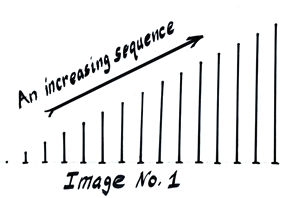Chapter 8
internet and Software Resources
Software
Use wxMaxima to check your solution to integration problems.
You should use the integrate function. It works like this:
• Integrate(x^2,x) will integrate the function x² with respect to x.
• Integrate(x^2,x,0,2) will complete a definite integration of x² with respect to
x with limits from x = 0 to x = 2.
Look for more advanced functions in the wxMaxima manual.
Asguru (Visited 07.11.06)
http://www.bbc.co.uk/education/asguru/maths/13pure/03sequences/index.shtml
This link gives access to a number of pages which introduce sequences and series.
Click the links in turn to work through the different sections. When you have
read to the bottom of a page click the large right arrow. This will take you to the
next page in the section.
Many of the sections contain interactive activities. Read the instructions carefully
and explore the ideas.
Some sections contain interactive tests and exercises. Use these to check your
understanding.
Nrich (Visited 07.11.06)
http://www.nrich.maths.org/public/index.php
Type sequences and series into the search box in the top right hand corner of the
page.
Try these sequences and series puzzles.

African Virtual University 67
There are a very large number to choose from. We recommend you only look at
stage 4 and 5 puzzles. Try the first one(s) that look interesting.
Wolfram Mathworld (Visited 07.11.06)
http://mathworld.wolfram.com/Series.html
Read this entry for Series.
Follow links to explain specific concepts as you need to.
Wikipedia (visited 07.11.06)
http://en.wikipedia.org/wiki/Sequence_and_series
Read this entry for Sequences and Series.
Follow links to explain specific concepts as you need to.
Key Concepts
Sequence
A sequence is an unending list of objects (real numbers) a , a , a , a ,... . The 1
2
3
4
number a is called the t
n h term of the sequence, and the sequence is denoted
n
by{ a .
n}
Convergence of a Sequence
A sequence { a is said to converge if lim a exists. If the limit does not exist
n}
n
n→ ∞
then it is said to diverge (or is divergent).
Infinite Series
∞
An infinite series, written
a
∑ , is a sum of elements of a sequence { a .
n}
k
k=1

African Virtual University 68
Partial Sums
The t
n h partial sum of a series, written S is the sum of the first n terms:
n
S = a + a + a + ...+ a .
n
1
2
3
n
Arithmetic series
An arithmetic series is a series in which the difference between any two conse-
cutive terms is a constant number d . If the first term of the series is a then the
t
n h partial sum of such a series is given by
n
S =
a + n− d
n
(2
(
1) )
2
Geometric series
A geometric series is a series in which, except for the first term, each term is a
constant multiple of the preceding term. If the first term is a and the common
factor is r then the t
n h partial sum of the geometric series is given by
n+1
⎡1− r
S = a
⎤ .
n
⎢ r 1 ⎥
−
⎣
⎦
Power series
A power series in x is an infinite series whose general term involves a power of
∞
the continuous variable x . For example, a
a x a x
a x
...
k
a x
0 +
1
+
2
2
+
3
3
+ = ∑ k
k=0
is a power series.
Interval of convergence of a power series
The interval of convergence of a power series is an interval (finite or infinite)
− R < x < R in which the series converges.
Radius of convergence of a power series
The radius of convergence of a power series is the number R appearing in the
interval of convergence.

African Virtual University 69
Key Theorems and/or Principles
(i) Sequences
• A monotone sequence { a converges if it is bounded.
n }
• A sequence { a converges only if it is a Cauchy sequence
n }
(ii) Cauchy Sequence
A sequence { a is called a Cauchy Sequence if and only if for every positive
n }
number ε > 0 , however small, there exists a corresponding positive integer
N (ε ) , such that a
a
for all ,
m n > N (ε ) . It can be proved that if a
m −
n < ε
sequence is a Cauchy sequence, then it converges.
(iii) Series
∞
• Divergence Test: If the series ∑ a converges, then lim a
. If
n = 0
n
→
n ∞
k =1
lim a
then the series diverges. We note, in passing, that lim a
is only
n = 0
n ≠ 0
→
n ∞
→
n ∞
a necessary condition for a series to converge but it is not a sufficient condition.
This means that there divergent series for which the condition applies. Indeed,
∞
1
one simple series, the harmonic series ∑ can be shown to be divergent al-
k
k =1
⎛ 1
though clearly lim
⎞
⎜ ⎟ = 0.
n→ ∞ ⎝ n ⎠
• Integral Test: Let f ( x) be continuous and positive for all x ∈ ,
1
[ ∞) . Then
∞
the infinite series ∑ f (n) converges if, and only if, the improper integral
k
converges.
=1
• Comparison Test: Let 0 < a < b for all n > 1. Then,
n
n
∞
∞
if ∑ b converges then a also converges, and
n
∑ n
k =1
k =1


African Virtual University 70
∞
∞
if ∑ a diverges then b also converges.
n
∑ n
k =1
k =1
a
• Ratio Test: If a
for all n ≥ 1 and if
n+1
lim
= L , then the series
n > 0
n
→∞ an
converges if L < 1 and diverges if L > 1 . If L = 1 the test fails.
⎛ 1 ⎞
• n − th Root Test: If a
for all n and if lim⎜a n ⎟ = L then
n > 0
n
n→∞
⎝
⎠
∞
the series ∑ a converges if L < 1 and diverges if L > 1. If L = 1 then n
k
=1
the test fails.
Learning Activity








